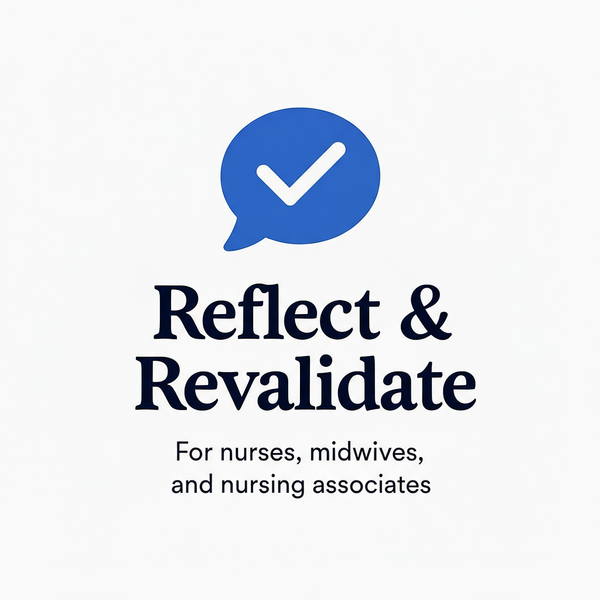Reflection: Recognising Early Signs of Sepsis
Share
Submitted by: Anonymous - Adult Nurse, Surgical Ward
What was the nature of the CPD activity and what did you hope to learn from it?
During a busy night shift on the surgical ward, I was caring for Mrs. Patel (pseudonym), a 65-year-old woman who was day three post-abdominal surgery. At handover, she was described as 'doing well' with stable observations and managing oral fluids.
However, when I did my initial round at 8pm, something didn't feel right. Mrs. Patel seemed quieter than earlier in the day, and although her observations were within normal limits, her heart rate was at the upper end of normal (95bpm) and she mentioned feeling 'a bit shivery.' Her temperature was 37.8°C—not technically a fever, but higher than her previous recordings.
I trusted my instinct that something was changing and increased my observation frequency. By 10pm, her heart rate had risen to 108bpm, her temperature was 38.2°C, and she was becoming confused—early signs of sepsis that could have been missed if I'd relied solely on the handover information.
Through this experience, I hoped to develop my clinical assessment skills, learn to trust my professional judgment, and understand the importance of recognising subtle changes that might indicate deterioration.
What did you learn from the CPD activity?
I learned that sepsis doesn't always present dramatically. The early signs can be subtle—a patient just 'not seeming themselves,' slight changes in observations that are still within normal ranges, or vague symptoms like feeling cold or tired. These subtle cues are easy to dismiss, especially on a busy shift.
I learned the value of trusting my clinical instinct. Even though Mrs. Patel's observations were technically acceptable, my gut feeling that something wasn't right prompted me to monitor her more closely. This early vigilance meant we caught the sepsis before she became critically unwell.
I also learned the importance of looking at trends rather than single observations. Mrs. Patel's heart rate of 95bpm wasn't concerning in isolation, but it was higher than her baseline of 70-75bpm. Recognising this change was crucial.
The experience reinforced the importance of acting quickly once sepsis is suspected. I escalated to the doctor immediately, initiated the Sepsis Six protocol, and Mrs. Patel received IV antibiotics within the golden hour. The medical team later confirmed she had developed a post-operative infection that had progressed to sepsis.
How did you change or improve your practice as a result?
I now always review a patient's observation trends, not just their current readings. I look at their baseline observations from admission and note any changes, even if the current values are within normal limits. This has helped me identify deterioration much earlier.
I've become more confident in trusting my clinical judgment and speaking up when something doesn't feel right, even if I can't immediately articulate what's wrong. I now use phrases like 'I'm concerned about this patient' rather than waiting until I have all the evidence.
I've also improved my handover practice. I now always include a patient's baseline observations and any subtle changes I've noticed, rather than just reporting that they're 'stable.' This gives the next nurse important context for their assessment.
Following this incident, I completed additional sepsis awareness training and now feel much more confident in recognising the early signs and initiating the appropriate protocol. I've also shared this case study with colleagues during a ward teaching session to help others learn from my experience.
How is this relevant to the Code?
This reflection demonstrates several aspects of the NMC Code:
Prioritise people (1): By trusting my instinct that Mrs. Patel wasn't quite right and increasing my monitoring, I put her safety and wellbeing first.
Practise effectively (6.1): I used my knowledge and clinical judgment to assess Mrs. Patel's condition and recognise the early signs of deterioration.
Recognise and work within limits (13.2): When I identified potential sepsis, I immediately escalated to medical colleagues rather than trying to manage the situation alone.
Preserve safety (13.4): I took prompt action when I identified a risk to patient safety, initiating the sepsis protocol and ensuring Mrs. Patel received timely treatment.
Raise concerns immediately (16.1): I didn't hesitate to escalate my concerns to the medical team, even though the signs were subtle and I was on a busy night shift.
Do you have any further comments?
This experience was a powerful reminder that nursing is as much about clinical intuition as it is about technical skills. Mrs. Patel made a full recovery and was discharged home ten days later. She and her family thanked me for 'catching it early,' which reinforced the value of vigilant nursing care.
I've learned that it's better to escalate concerns that turn out to be nothing than to miss early signs of deterioration. This experience has made me a more confident and assertive nurse, and I now actively encourage junior colleagues to trust their instincts and speak up when they're concerned about a patient.
